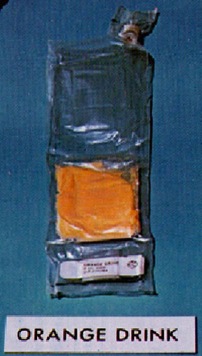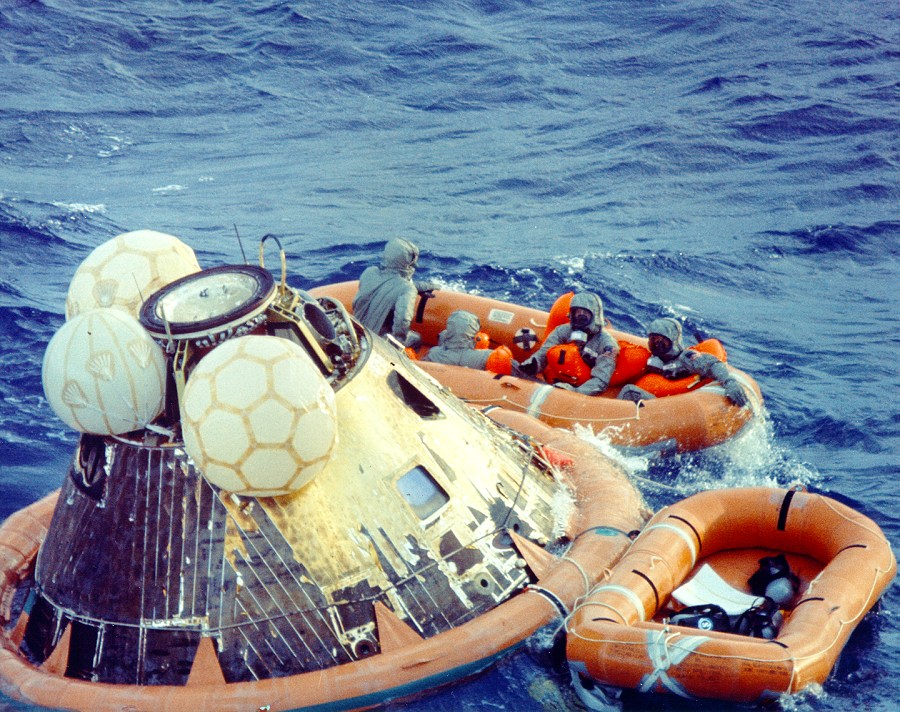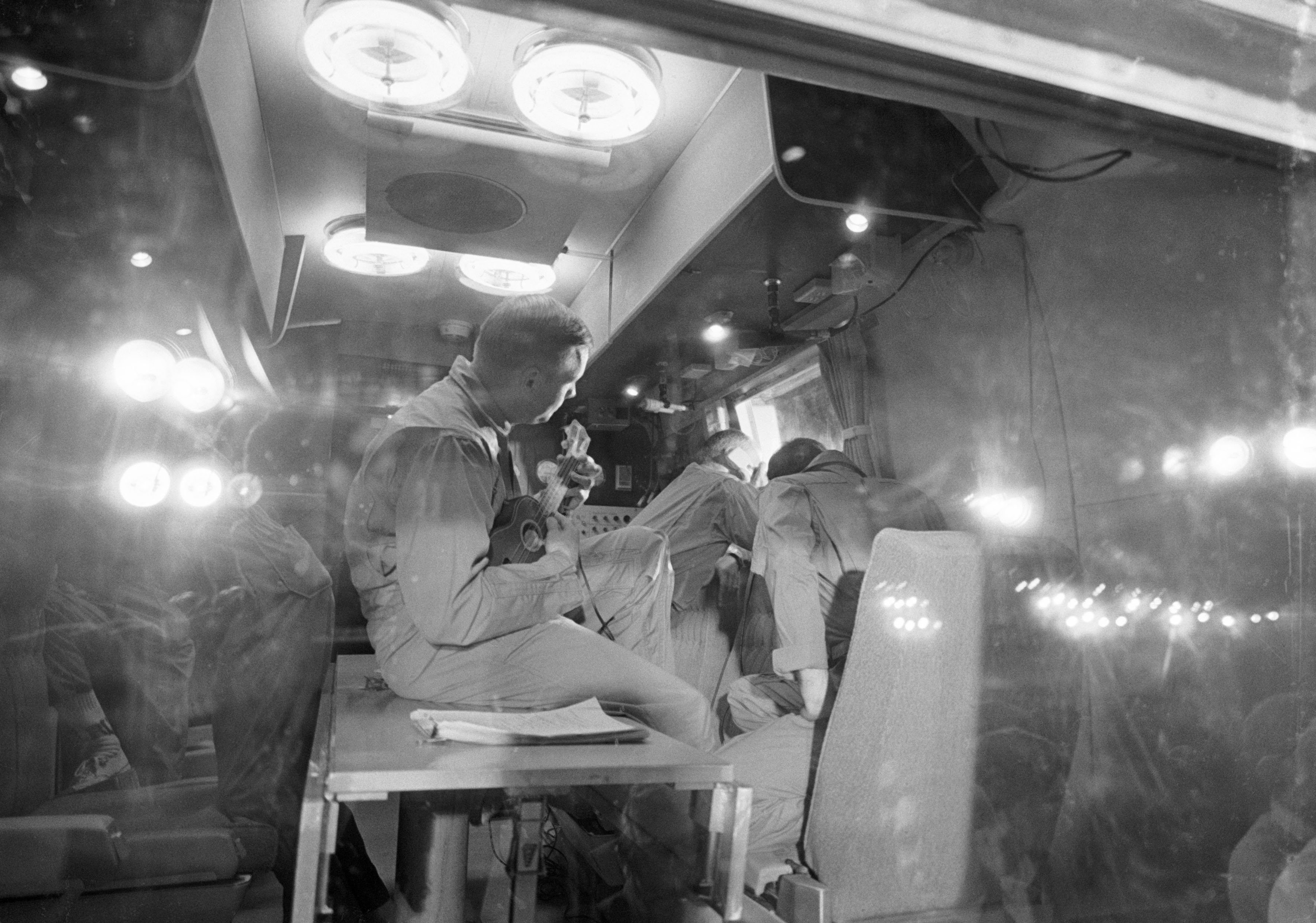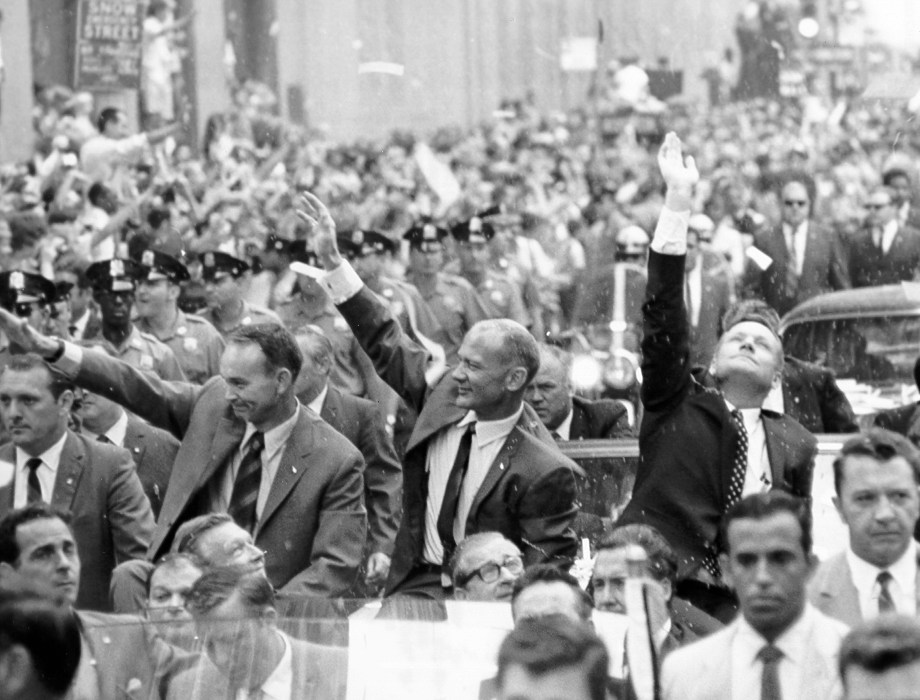40 Years After Apollo 11: July 24 - Other Landing Day!
I never wrote a final entry back in 2009 (work?) So here are my thoughts from today, July 24, 2012.
Today is the day the astronauts return to Earth. As with yesterday, they’re exactly on course, and a mid-course correction burn is not needed, so Mission Control lets them sleep in an extra hour. But they get up early anyway. It’s only five hours until reentry. Still, they don’t seem to be in a huge hurry…

CAPCOM: And Mike, if you’re on loop there, to extend the range and the constant-g re-entry, here, I’ve got a little procedure, if you would like to listen to it.
Mike Collins: Stand by one. I’m right in the middle of my orange juice. Be with you in about 5 minutes.
It’s raining in the target landing area, so the splashdown point is moved about 200 miles downrange, where it’s supposed to be sunny and nice.
As they approach Earth, they jettison the service module. Now, the little cone-shaped capsule at the top of the 363 foot-high rocket that left Earth is the only part returning.
When the weather is (was) bad for a Space Shuttle landing, Mission Control can just tell them to hold off on their de-orbit burn and stay up a little longer. That’s not how Apollo worked. They are hurtling towards Earth at 24,677 miles per hour – way faster than the Shuttle’s typical speed of 17,500 miles per hour.
Apollo no longer has any fuel, save for a tiny bit in the control thrusters to make sure the capsule hits the atmosphere at just the right angle. So they have one shot. They can’t go around and try again. They are about to hit the super-thin upper edge of the atmosphere. But at that speed, it will feel like something just short of hitting a brick wall.
Spaceships reentering the atmosphere are surrounded by hot, ionized gas due to the speed. This leads to a period of several minutes where radio communication is impossible. The people on the ground just have to wait, and assume that everything is going well. As Columbia is about to enter this blackout period, Neil Armstrong makes his last transmission from space:
“See you later.”
Now, the capsule hits the atmosphere. The astronauts are slammed into their seats by 6.5 G’s (that means they feel like they weigh 6.5 times what they normally do.) Their average weight was 162 lbs. (they’d lost 7 pounds during the 8 day trip,) so they each felt like they weighed around 1,050 lbs… and not for just a second or two, for four minutes! This coming right after 8 days of feeling no weight at all! There’s a reason why almost all the men who went to the Moon on Apollo were hot-shot fighter pilots.
On the other side of the blackout, the carrier U.S.S. Hornet is waiting for Columbia. It’s just before dawn in the middle of the Pacific Ocean. Two helicopters with specially trained crews are already airborne, flying about, waiting for word of the capsule’s exact position.
Then, in the early morning light, they see it, floating down on three giant parachutes. Before the capsule can even hit the water, the primary helicopter is already hovering nearby.
The capsule lands, and the first humans to visit the surface of the Moon are home, after traveling 953,700 miles on a trip lasting 8 days, 3 hours, and 17-ish minutes!
So, this is 1969. Our time in space is still limited. There are people on the International Space Station who have been in space longer than the total amount of every astronaut and cosmonaut put together in 1969. And nobody knew – knew for certain – that there wasn’t life on the Moon.

Before opening up the hatch, the first rescue swimmer donned a full decontamination suit. And after he opened the hatch, he passed in three more for the crew to put on. Because what if all that lunar dust they were kicking up with their boots had tiny dangerous microbes?
Once the crew was out of the capsule and on the raft, they were hoisted one at a time into a helicopter. The helo flew to the carrier, landed, and was immediately taken below. Then the astronauts walked over into a converted RV trailer which would be their home for the next 21 days, while everyone waited to see if they’d suddenly turn into zombies or worse: space communists! At least, that was the official reason. Since President Nixon was on board to greet them, they might have just wanted to make sure he didn’t give them any of his cooties (see July 13’s entry.)
The Hornet swung by the capsule and picked it up with a crane. Then it steamed to Hawaii. There, the RV with the astronauts and a Navy doctor and nurse was offloaded and put aboard a plane for Houston.

Finally, after 21 days with nothing to do but sit around and listen to Neil play his ukulele, they were released from quarantine.
Then they got a proper welcome home.

So what does it all mean? Well, we won the space race for America, but we lost the space war for humanity. By pushing so hard for the deadline to land on the Moon before 1970, we took a ton of shortcuts. Before Kennedy set that goal (and at the time, his reasoning wasn’t bad,) NASA was expecting to get a nice big space station built in orbit using this awesome new concept called a “space shuttle.” Then, they would assemble the parts needed for a lunar trip in orbit, and finally set off for the Moon. Once there, they could start work on a Moonbase.
But because of Kennedy’s goal, NASA had to design and implement what was basically a one-off mission, with no built-in permanence or follow-up. Even before Apollo 12 was launched, Congress was drastically cutting NASA’s funding and canceling future missions. After all, we had beaten the Soviets. That was the whole point, right? (We found out later that we really, really, really, really didn’t have to worry about the Russians beating us to the Moon. Really.)
What would have happened if things had progressed more “naturally?” We might have developed a properly funded, uncompromised space shuttle. We might have used it to build a nice big space station. We might then have used that space station as the starting point for trips to the Moon. The downside would have been that the first lunar landing probably wouldn’t have taken place until around 1980. It’s hard to say.
On the other hand, Apollo proved once again that America can do anything it sets its mind to if you can get enough of her population excited about something. Kids growing up in the 60’s had the most amazing science role-models in the history of the world. And they knew from an early age that if they wanted to be an astronaut, they had to study hard and learn all about science. Apollo fueled American innovation for well over a decade, and spawned a legion of young scientists and engineers to fuel it for another decade after that. American kids – and adults – learned that it was possible to dream big.
What do we teach kids today? Be petulant, unethical, loud, unempathetic, and you’ll get your own TV show and maybe a perfume.
While Apollo set us back in terms of a sustained presence in space, it kept America dreaming big for two more decades. And it did, in fact, accomplish the greatest feat in human history. We went to the Moon. We took the first steps off-planet. We can do it again, and we can do more. Apollo taught us that we just have to want it.
